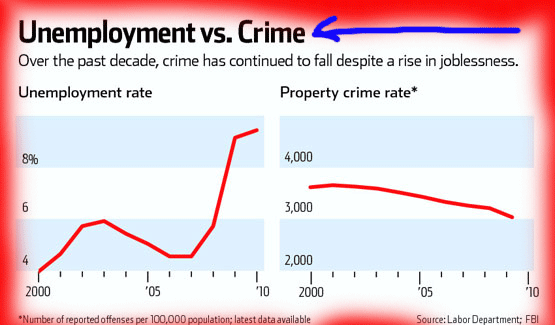JAMES Q WILSON CONTEMPLATES THE QUESTIONS AROUND THE DROPPING CRIME RATES AND ELEVATED UNEMPLOYMENT
Criminologist James Q. Wilson is famous for, among other accomplishments, being the co-author of the broken windows theory of crime and community renewal. Through his work, he has drawn a list of prominent acolytes, including former LAPD Chief Bill Bratton, who is an ardent fan of Wilson’s theories of crime and policing.
Thus it drew much interest when an op ed of Wilson’s appeared in the Wall Street Journal over the past weekend in which the criminologist, now in his 80s, speculated on the topic of why the crime rates have decreased when unemployment is so high.
I can’t say that I agree with every single one of his ideas, now or in the past. (He’s a bit conservative for my taste.) But his genuine inquisitiveness and rigor of thought are among the many qualities that make Wilson’s theories always worth examining—and make this op ed a must read.
Here is a big clip from the essay’s middle:
[W]e have little reason to ascribe the recent crime decline to jobs, the labor market or consumer sentiment. The question remains: Why is the crime rate falling?One obvious answer is that many more people are in prison than in the past. Experts differ on the size of the effect, but I think that William Spelman and Steven Levitt have it about right in believing that greater incarceration can explain about one-quarter or more of the crime decline. Yes, many thoughtful observers think that we put too many offenders in prison for too long. For some criminals, such as low-level drug dealers and former inmates returned to prison for parole violations, that may be so. But it’s true nevertheless that when prisoners are kept off the street, they can attack only one another, not you or your family.
Imprisonment’s crime-reduction effect helps to explain why the burglary, car-theft and robbery rates are lower in the U.S. than in England. The difference results not from the willingness to send convicted offenders to prison, which is about the same in both countries, but in how long America keeps them behind bars. For the same offense, you will spend more time in prison here than in England. Still, prison can’t be the sole reason for the recent crime drop in this country: Canada has seen roughly the same decline in crime, but its imprisonment rate has been relatively flat for at least two decades. [MY NOTE: Quite a number of criminologists disagree with Wilson’s conclusion about incarceration’s role in bringing crime down.]
Another possible reason for reduced crime is that potential victims may have become better at protecting themselves by equipping their homes with burglar alarms, putting extra locks on their cars and moving into safer buildings or even safer neighborhoods. We have only the faintest idea, however, about how common these trends are or what effects on crime they may have.
Policing has become more disciplined over the last two decades; these days, it tends to be driven by the desire to reduce crime, rather than simply to maximize arrests, and that shift has reduced crime rates. One of the most important innovations is what has been called hot-spot policing. The great majority of crimes tend to occur in the same places. Put active police resources in those areas instead of telling officers to drive around waiting for 911 calls, and you can bring down crime….
There may also be a medical reason for the decline in crime. For decades, doctors have known that children with lots of lead in their blood are much more likely to be aggressive, violent and delinquent…. Tests have shown that the amount of lead in Americans’ blood fell by four-fifths between 1975 and 1991. A 2007 study by the economist Jessica Wolpaw Reyes contended that the reduction in gasoline lead produced more than half of the decline in violent crime during the 1990s in the U.S. and might bring about greater declines in the future. Another economist, Rick Nevin, has made the same argument for other nations.
Another shift that has probably helped to bring down crime is the decrease in heavy cocaine use in many states….
There’s lots more. This is one essay that you need to read in its entirety.
NOTE: Thanks to Doug Berman at Sentencing Law and Policy, for the graphic

